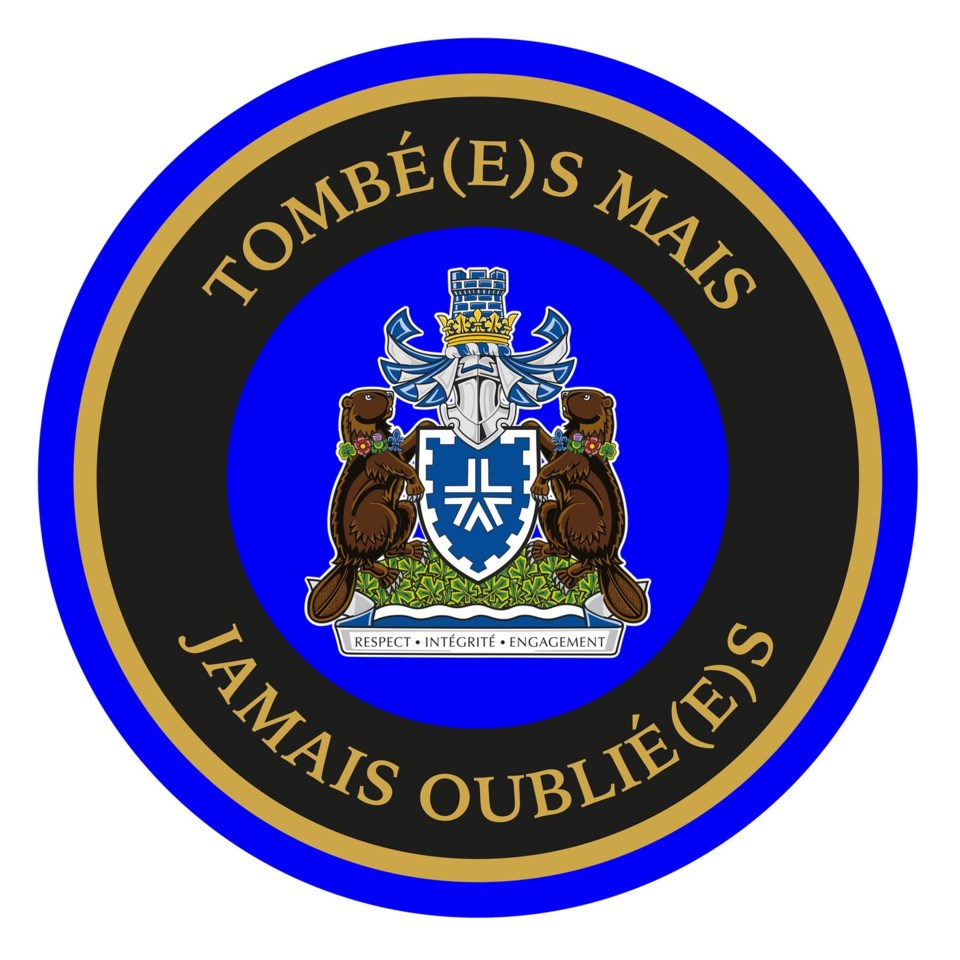MONTREAL — Montreal police have introduced a new patch to replace a symbol that many officers have worn on their uniforms to honour fallen colleagues but that has become associated with the far right.
Police Chief Fady Dagher said Wednesday that the controversial thin blue line symbol, depicting a black and white Canadian flag divided by a blue horizontal stripe, is worn by about 10 to 15 per cent of Montreal officers.
Some who wear it say it's an expression of solidarity with police who have died on duty, but the symbol has become associated with Blue Lives Matter — a term used by some police supporters in response to the Black Lives Matter movement. It has also been criticized as a symbol of white supremacy.
Dagher says the switch is necessary to instil trust and display neutrality. The new circular patch contains the words “fallen but never forgotten" in French around the police force’s coat of arms. The new patch still features a blue line, but it forms a circle rather than a dividing line.
“The thin blue line (symbol) was contaminated by the extreme right in the United States,” said Dagher, pointing out that the American version of it was used by rioters at the Jan. 6 attack on the U.S. Capitol.
But despite a portion of his officers wearing a symbol publicly embraced by hate groups, Dagher says there isn’t a problem of right-wing extremism within the department’s ranks. He said officers he has spoken to about it were surprised to learn about the patch’s history.
Sociologist Frédéric Boisrond, who has served as an external consultant to the force on questions of public perception and racial discrimination, said it is “totally unacceptable” and “very insulting” that some officers still choose to wear a symbol that has been embraced by hate groups, including white nationalists at the deadly Charlottesville, Va., rally in 2017.
However, it may be many months before patches are swapped. The police department will allow a transition period for officers to make the switch before the change is enforced sometime after the summer.
In fact, the police chief says a hard deadline won’t be put in place, nor will non-compliant officers be penalized. The whole process could take over a year, and he’ll consider it a “huge success” if the majority of officers have switched to the new patch by next year.
Max Stanley Bazin, president of La Ligue des Noirs du Québec, an association representing Black Quebecers, welcomed the decision but said there should be no transition period and the thin blue line patches should come off immediately. He says an authority representing the state should never be allowed to wear a known symbol that intimidates its citizens and provokes violence.
This report by The Canadian Press was first published May 29, 2024.
Joe Bongiorno, The Canadian Press



